Generations of Philly families are incarcerated together READERS NOTE: For decades, Philadelphia has grappled with the seemingly intractable scourge of violent crime in its poorest communities, but proposed solutions often have overlooked the root causes. In this story about the epidemic of families in prison together, Samantha Melamed highlights a striking pattern in violent crime — the way it is repeated through generations. That means telling the stories of men who have been responsible for vicious, often unforgivable acts. This article does not attempt to excuse them or to gloss over the pain of those whose lives were forever altered by their crimes. The aim, rather, is to illuminate a public-safety crisis — a cycle of innocent children growing up to be violent criminals. Thursday, Jan. 25, 2018
As the bus rattled toward the State Correctional Institution-Graterford, Jorge Cintron Jr. could barely contain his excitement, a nearly childlike giddiness. Though the journey had been 14 hours, most of it in shackles, he wasn’t close to tired.
To the other weary inmates in mustard-yellow “D.O.C.” jumpsuits, what loomed ahead was just another prison: same bars and barbed wire, same bland food, same thin mattresses. But Cintron was about to be with his father, his namesake — the role model he had followed into the drug world, into court on murder charges, and then into prison, their twin life sentences imposed eight years apart.
It had been 20 years since he had last seen the man everyone said he took after. “Lil Lolo,” his father’s friends from Philadelphia’s Fairhill section would call him. Now, he was about to come face to face with Jorge Cintron Sr., Lolo himself.
“I hadn’t hugged my father in so many years, or heard his voice,” Cintron Jr. said. “It was bittersweet, because we’re both in prison and having to see each other in here.”
Since that day in 2011, Cintron Jr., 38, has lived on the same cell block as his father, who is 58. Recently, the cell next door to his dad’s became available, so he moved in. Each evening, by 9 p.m., they lock themselves into cells 86 and 87 of A Block for the night.
Their story is, in some ways, not an unusual one. All around them are inmates who come from the same neighborhoods, the same city blocks or even the same households. Father and son hail from one of the most heavily incarcerated communities in one of the
most incarcerated cities in the country. And just as crime gravitates to certain neighborhoods, it also clusters in families:
According to one criminologist’s analysis of the National Longitudinal Study of Adolescent Health, 5 percent of families account for more than 50 percent of all arrests.
Numerous studies have found that individuals whose parents have committed crimes
are at least two times more likely to be perpetrators themselves.
Sexual offending runs in families.
So does violent crime.
In Pennsylvania, the Department of Corrections does not keep statistics on familial relationships between inmates. Graterford’s public-information officer said she had no way of tracking it.
But Darryl Goodman, who was locked up with his own father at Graterford before dedicating his life to helping at-risk young people, has been piecing together a data set with help from inmates at the 25 prisons around the state. By his most recent reckoning, (and it’s hard to keep up, as inmates constantly are being moved) there were 243 fathers in state prisons with their sons. At Graterford alone, he counted 41 father-son pairs, including 17 sets of cellmates. He found seven families in which a father, son and grandson were all locked up together.
Cintron Jr. finds those numbers plausible: “On the block right now, there are probably three or four sets of brothers. And there are fathers and sons on my block. Just on the block alone, there are families, cousins. There is nothing for it. It’s the cycle. It’s the generational curse.”
On the block right now, there are probably three or four sets of brothers. And there are fathers and sons on my block. Just on the block alone, there are families, cousins. — Jorge Cintron Jr.That crime runs in families is not news to those in corrections.
But that there are regular family reunions in the visiting rooms of state prisons reflects an incarceration rate that — despite attempts to turn the tide — remains at near historically high levels and
deeply concentrated in poor communities of color. By one estimation,
there are 36,000 black men ages 25 to 54 missing from Philadelphia, either killed or incarcerated. Philadelphia leaders are working
to cut the city jail roster by one-third in three years, while the state system has shed about 3,000 inmates since the population peaked at more than 51,000 inmates in 2009. But these efforts seek to
bend a curve that tracked upward for decades. Pennsylvania admitted more than 19,000 state inmates in 2016, including parole violators; that annual figure remains double what it was 20 years ago, even as the violent crime rate has declined.
More Prison Admissions,Far Steeper Sentences Since 1990, the population of Pennsylvania's prisons has tripled, but the number of inmates with sentences of 20 years or more has increased at a far faster pace. Cumulative percentage change since 1990 Staff GraphicMeanwhile, a major challenge to decarceration — and yet another factor that finds extended families and whole neighborhoods bumping into one another behind bars — is that prison sentences remain longer than ever before.
According to a 2012 Pew analysis, Pennsylvania’s inmates were the second-longest-serving in the nation. The average sentence for a state inmate is 30 percent longer than it was 20 years ago. And very long sentences are imposed with far greater frequency, according to Pennsylvania Corrections Department statistics. Since 1990, the number of prisoners serving more than 20 years increased 714 percent. The number sentenced to life without parole increased 155 percent to 5,448; only
Florida has more such lifers.
Some young inmates now serving long sentences for serious crimes said they grew up in awe of their fathers, and wanted to be just like them. But what they absorbed was a legacy of absence, neglect, and abuse — chaotic lives, framed by violence and poverty.
Goodman recalled childhood weekends spent visiting his father at Graterford. “The whole visiting room is filled with joy and love, and psychologically it had an effect. I wanted to be a part of whatever he was into,” he said. By 1989, he was in on a 15-year sentence for a series of armed robberies and a murder; then, he got to see the rest of the prison.
Others saw their fathers as mere cautionary tales.
“I always had the mindset, ‘That’s not going to be me,’ ” said Julian Dan, 27, whose father is at Graterford on a life sentence. Since December 2016, Dan has been there with him, on a gun conviction.
Some inmates were together by request; for some of them, it took more than 10 years for the transfer to come through. Others connected by chance. These convergences can last a few days or decades. Sometimes, they’re life-changing. In prison, fathers attempt, often for the first time, to parent: to spark faith in God, to instill the importance of hard work and honest living, of family, of education. As for the sons, they finally start to understand who their fathers really are. In these cramped cells, there’s no room for pedestals.
But what concerns Goodman, the reason he’s made a study of this phenomenon, is that many of those sons have sons, kids and teenagers prepared to follow right behind them. Pennsylvania state inmates, collectively, have 81,000 children at home.
![]()
DAVID SWANSON / Staff Photographer Darryl Goodman with his father, Bruce Goodman, outside the city’s youth detention center, where they have volunteered as mentors to guide troubled kids.When Goodman left prison, he began working with some troubled kids — on West Philadelphia corners, and at the city’s juvenile detention center — as a mentor, trying to guide them off the streets.
“It seemed like 60 percent of them would ask me what institution I’d been at. And then they might say, ‘My father’s there. Do you know my father?’ ” he said. “It opened my eyes to the fact that this is a whole new generation that is getting ready to be raised by their fathers in prison if we don’t do something to stop it out here.”
By age 6, Jorge Cintron Jr. knew one thing about his dad: “He was the boss, he ran everything.”
Cintron Sr. was a head of the Red Star gang, which, according to news reports, sold $10,000 worth of cocaine and crack per day at its peak in the late 1980s.
![]()
Jorge “Lolo” Cintron, 58 Cintron was working as a truck driver when his sister married into a drug organization. He’s serving a life sentence for the assassination of a rival dealer, and is now a deacon in the prison church. Although his son is in prison alongside him, he said, “I’m proud of my son.” Jorge Cintron Jr., 38 Cintron’s been in prison since age 17 on a life sentence. In 1999, he said, “I gave my life over to Jesus.” A friend of his father’s at Huntingdon state prison guided him into the church. He’s close with a Mennonite family, and calls in to listen to their church service each Sunday.Cintron Sr.’s own father wasn’t around when he was a kid in Puerto Rico. He came to Philadelphia at 15 in search of opportunities, and found gang life.
“When I fight the leader,” he said, in English learned in prison, “I become the leader of the gang.”
Having kids straightened him out for a while; he worked as a chop shop mechanic, then as a truck driver. “But I wasn’t 100 percent a father, because I didn’t know what is a father,” he said.
And, when his sister married a drug distributor from Miami, Cintron Sr. suddenly had the chance to be a boss. Soon, police raids on the Cintron home became routine. But in the neighborhood, he commanded respect. He helped those in need with groceries. He drove a Corvette.
His good fortune would last just three years. In 1989, Cintron Sr. was convicted of paying two hit men $1,000 to kill Juan Carlos Baldajil, a rival dealer who encroached on his turf. (Now, as then, he insists he didn’t do it.)
He was sentenced to life in prison. Meanwhile, his son’s criminal career was just beginning.
“In school, when teachers asked what I wanted to be when I grew up, in my mind, I said, ‘I want to be a drug dealer,’ ” Cintron Jr. recalled. “But I knew I’d get my parents in trouble, so I’d say, ‘a fireman.’ ”
His mother began drinking and using cocaine, and entered a series of abusive relationships. Cintron Jr. himself was drinking by age 8, using marijuana and PCP by 11. By the third grade, he was skipping more than 80 days of school, he said, but somehow his teachers kept passing him. So after sixth grade, he stopped attending altogether. “I thought maybe eventually they’ll mail me a diploma.”
There were alternatives on the streets, though. Friends of his father saw his potential.
He was just 11 when one gave him 80 packages of heroin, paying him $50 a day just to store them at his mother’s house. She found the stash and wanted to flush it; he told her if she did, she’d have to answer to the gangs. When he was 14, a local dealer gave him his first gun and urged him to rob other drug dealers. And when he was 15, he set up shop on his very own corner on Mascher Street, right near the Conrail bridge in Kensington.
“I wanted to be like my father, and I felt I had hit my mark,” he said. “A neighbor called the cops, but they took the drugs for themselves and then they let me go. That happened several times. It made me think I was invincible.”
Soon, though, some of those robberies went very wrong. Raphael Sisla was 30 when Cintron Jr. shot and killed him. Anthony Kruges was 83 when Cintron Jr. stabbed him, taking his life.
Then, Cintron Jr.’s own cousin was shot and killed by another teenager. Cintron Jr. said he was struggling with that loss when he got into a traffic dispute with a man named Richard Lugo, and shot him dead. Lugo was just 24 years old. It wasn’t until he heard another teen had been arrested for Lugo’s death, in September 1996, that he confessed all that he’d done.
“He was extremely bloodthirsty,” the prosecutor told reporters at the time.
“I was lost,” Cintron said. “I was so far gone, and addicted to cocaine and syrup and PCP. I had no regard for life and my actions. There was nothing there. I was in such a dark place I started becoming suicidal. I knew someone either had to kill me or I had to go to prison.”
Why does crime concentrate in families? Why do fathers see their worst mistakes repeated by their sons?
It’s a complicated snarl whose threads of causation are difficult to unravel. Some researchers have described an accumulation of disadvantage: generational poverty; childhood trauma; learned behavior; the antisocial influences, “
spatial contagion” and
toxic stress of living in a dangerous neighborhood; and the compounding weight of official bias.
“What we do know,” said Marie Gottschalk, a University of Pennsylvania political scientist who’s written extensively on mass incarceration, “is having an incarcerated parent, whether you can visit that parent or not, is often associated with greater mental health problems for kids. They’re more likely to have behavioral issues, to have severe depression.”
Many people assume it’s best to shield a child from an incarcerated parent, she said. But, “In most cases, denying that contact will make those issues even more severe.”
Pennsylvania’s Prison Population The number of inmates grew from about 12,000 in 1986 to nearly 52,000 in 2011, before falling slightly in subsequent years. In 2016, about 5,500 inmates were serving life sentences. Staff GraphicResearchers say, too, that there’s a consequence to being labeled a criminal: Those who have interactions with the justice system are more likely to exhibit criminal behavior later on than those who don’t.
Some propose that a parent’s being labeled a criminal — and the bias that may accompany that — can transmit to a child, making him more susceptible to being caught up in the system.
To John Wetzel, Pennsylvania’s Secretary of Corrections, it’s even simpler than that. He knows 14 percent of his inmates come out of the foster-care system, 50 percent have no high-school diploma and 80 percent have been exposed to trauma.
“Over a career working in corrections and walking through visiting rooms, you see inmates come and go — and then you see their kids, and then their kids,” Wetzel said. “When you start looking at what’s driving prison populations, it has less to do with criminal justice and more to do with education and economic opportunities. The zip codes where we get the most inmates from have the poorest school districts, the highest numbers of single-parent homes.”
Some academics also cite another explanation: genes.
“It’s
politically incorrect. It’s a minefield,” said Kevin Beaver, a professor of criminology at the University of Florida. “My research and others shows that probably a large extent of the reason that crime concentrates in families, why siblings resemble each other in crime and resemble their parents, is due to genetic factors.”
He points to his
research on adopted kids: “They resemble their biological parents in terms of criminality, and not so much their adoptive parents.” Other
researchers have found certain combinations of genes at high rates in violent criminals.Beaver said such research is often misinterpreted. There’s no “murder gene,” for instance. And, he emphasized, genes aren’t fate. They are probabilistic, and external factors can determine whether they’re even activated.
“You and I could both have similar genes predisposing us to crime,” Beaver said. “But if I’m in a low-income neighborhood, exposed to lots of violence, those genes may be turned on. If you’re in a nice middle-class neighborhood, those genes may be dormant.” So, the same traits that might predispose for violence in a context of extreme deprivation could, in a middle-class context, make for a fierce athlete instead.
He’s also studied how parenting predicts criminal involvement. He concluded it’s only a significant factor in extreme cases.
Extreme, though, is not uncommon at Graterford.
![]()
DAVID SWANSON / Staff Photographer Inmates in a block at Graterford Prison, where as many as 41 father-son pairs are incarcerated, in September.Consider Makkah Dillard, who was incarcerated there with his father, Robert Moore, until Moore came home last year. Moore, 57, describes his son’s childhood as “very horrific.”
Moore served more than 30 years for his part
in a 1985 home invasion and gang rape. His son is also incarcerated for a sexual offense. Dillard insists he is innocent. On the other hand, there’s no doubt he suffered the type of
childhood traumas researchers link to increased risk.
According to Dillard’s sister Latasha, the Dillard kids were abused by their mother, father and, later, a stepfather. She recalled being hit, stabbed and left alone without food for three days. She remembered squatting in abandoned houses with no heat or hot water, often locked in a room for the entire day.
“We were supposed to be in school. And when [child-welfare services] came, she made us hide in a closet,” Latasha said. She ran away from home at 14, but, she said, “The flashbacks will never go away.”
While some of the most notorious crime families began with
patriarchs who reared their children to be outlaws —
one Louisiana man even named his kids Jesse and Frank James — the fathers who participated in this story spoke ruefully about the fates that washed their kids up in cells with them.
Some tried to stop it, to mold their sons over crackling prison phone lines.
Others were simply absent.
Preston Grimes was 19 when his twin sons were born. “I had all intentions to be a good father,” he said. “I bought diapers. But as soon as a few months passed, I felt tired of that responsibility. I wanted to go out and party.”
By this past summer, when the twins were 22, both were incarcerated. One, Tyler, was at Graterford with his father.
Tyler’s impression of Grimes when he was growing up in York, Pa.? “Piece of s—.” There were fights, thefts and burglaries, then a bank robbery that got Grimes 10 to 20 years.
Grimes’ other kids won’t even talk to him. For years, neither did Tyler.
A twist of fate brought them back together. “I was reading the paper one day,” Grimes said, “and I seen a person got robbed where he lived at. I told my celly, ‘I think it was my son who did that.’ ”
![]()
Preston Grimes, 43 He wanted to be there for his kids, but couldn’t maintain the effort. Once or twice, he sent his twin sons birthday cards from prison. “There’s been times when I was 9 or 10,” his son Tyler said, “and a card would come in the mail: ‘Happy birthday, Dad.’ And I’d ask mom, ‘Who’s this?’ She’d say it must be the wrong address.” Today, Grimes’ other kids don’t speak to him. Tyler Grimes, 22 An avid reader and a poet, Grimes said he’s tried to help his father with reading and writing. His father will be paroled before he is. Grimes isn’t sure his father will make it. “I see him in jail. But when you get home, it’s different. You get bills, responsibilities,” he said. He asks his father: “What are you going to do when things get hard? Are you going to just rob someone?”To Tyler’s mind, “it’s a little coincidence, a little bit of following in his footsteps.” He said he grew up fascinated by gangster life, but did not want to be like his father. He was about to enroll in a military academy when his friends convinced him to join in a robbery. After they got caught, his mindset was “like, I’m already a felon, may as well.”
A prison counselor helped father and son begin a correspondence. When Tyler had the opportunity to transfer, he chose to be with his father.
“He told me he had cancer,” Tyler said. “I might’ve got the impression he was about to die. So I was like, ‘OK, let me go down there before he kicks the bucket.’ ”
They were cellmates for six months. Tyler, who enjoys poetry, helped Grimes with reading and writing.
“This is the first time I had a real relationship with him for more than an hour at a time,” Tyler said. But, “It’s still hard for me to call him Dad. I never have. I’ll call him ‘yo’ or his nickname. I don’t feel like he’s earned that right, to be called Dad.”
Grimes, 43, has been transferred and could soon be paroled. Tyler, 22, is skeptical. “He will be back,” he said.
Other relationships are intimate, filled with encouragement and praise. In prison, fathers are finally the parents they always envisioned but couldn’t figure out how to be.
Calvin Floyd, 69, has three sons. Two are in prison; the other was murdered. One bitter consolation: His son Shontee Latham, 43, is in Graterford with him. Latham canceled an interview because he didn’t want to jeopardize their housing situation. In an apologetic letter, he assured a reporter, “You’ll find [Floyd] a delightful old man.”
Floyd’s own father left when he was 8. “But he would really bust one on me when he came by. He had a heavy duty extension cord he called George. He would quadruple it up. What I needed from him, he couldn’t give me. He wasn’t able. And I see this repeated with my son.”
Floyd dropped out of high school and into gang warfare. He claims he got his life together but was locked up wrongfully twice — first, for armed robbery and, later, for the 1980 killing of West Philadelphia store owner Jung La. Prosecutors said he shot La after a quarrel over the price of a 50-cent ice-cream cone.
Sentenced to life, Floyd tried writing to his son, but the boy’s mother threw out the letters. Eventually, he gave up.
![]()
Calvin Floyd, 69 Floyd and his son, Shontee Latham, are both serving long sentences for violent crimes they say they did not commit. “This is not just happenstance,” Floyd said. “Providence brought us together, but there are also some minds behind the social experiment that guides young men to prison. Every generation, they got the whole of Philadelphia locked up.”He was in an institution in western Pennsylvania when a young man approached, inquiring about his clothing. (Though Floyd has the standard-issue brown uniform, his is fastidiously maintained, his shoes polished twice a week to a high shine.) “I looked at him and said, ‘What’s your mother’s name? Do you know who I am? I’m your father.’ ”
Just like his father, Latham had been sentenced for armed robbery, but denied his guilt.
Their reunion was cut short when they got transferred to different prisons, and lost contact. But in 2011 they both wound up in Graterford.
“We study together, read, go to school, go to church. Everything I do, he do,” Floyd said. They work together in the kitchen, and live 10 cells apart.
They talk often about the strangeness of their twinned fates, the domino effect crashing from one generation into the next.
Once Floyd’s father was incarcerated, his mother couldn’t control him, Floyd said. The same went for his son. “The streets were waiting for him, the same way they were waiting for me. … He was looking for someone to guide him. The good part about it is, he did manage to find me.”
Even when fathers stay in touch, parenting from prison isn’t easy.
Julian Dan grew up visiting his father, Amir Cartair, at Graterford.
![]()
Julian Dan with his aunt, Alisha Cartair, at SCI Graterford. Amir Cartair, 48 In prison for life, Cartair nonetheless tried to be a father to his kids. “They listen to me — while they’re here. But once they leave and get back to the neighborhood, the lure of their friends, that’s it. I think a lot of times they are trying to get out of the shadow of their fathers and make a name for themselves. That tends to get them in the same situation.” Julian Dan, 27 Dan has been in and out of trouble for much of his life. Not long ago, he was shot on the street in West Oak Lane — five bullet holes in his back, chest, and legs. “I was so close to dying. I got scared.” He bought a gun illegally, and went to prison for it. Dan wants to move out of state with his girlfriend and daughter. He thinks leaving Philadelphia is his best shot at breaking the cycle.
![]()
“I didn’t know he was in jail. I thought he was at work,” Dan said. “When I was 10 or 11, I found out what it was. It was one of the worst experiences I can remember. I always looked up to my dad, and when they told me what he was in for I looked at him differently.”
In 1993, Cartair shot and killed Anthony Pierre, 37, a law school graduate managing an East Mount Airy dollar store until he could take the bar exam.
Cartair, now 48, looks back with deep regret. He said his father had just died, and he was in despair. “I had an I-don’t-care attitude. I went on a binge of drugs, alcohol, crime, doing crazy things. I didn’t have an outlet for therapy. I had no one to talk to.”
He worries that Dan’s childhood, in Mount Airy, was even bleaker. For a while, both Dan’s parents were incarcerated. “He was going from place to place. He didn’t have the stability a child needs.” Later, Dan’s mother and sister both died of overdoses.
The careful advice Cartair meted out on visits always seemed to fade away on the trip home. Dan ended up in the juvenile system for minor offenses — smoking weed, fighting — and, later, more serious ones.
“There’s times I’ve been doing good,” he said. “That wouldn’t last long. I would just stop caring.”
Not long ago, Dan was shot five times. He bought a gun illegally, just to be safe. That’s what landed him in Graterford. Seeing his father that first night, Dan said, “It felt weird — like, I’m really here, not just visiting you.”
Now, they talk daily, plotting Dan’s future.
“We do things together,’ Cartair said. “We work out. We play chess.”
To Cartair, kids like his son didn’t have much of a chance. “I think society has failed them. Their parents failed them. Their environment was not good.” He is working on his associate’s degree from Villanova, and trying to get his son into the church and into school. He wants Dan to provide the same guidance to his own daughter.
“The chain has to be broken. The cycle of grandfather, father, and son. It has to be broken somewhere, and I’m hoping it stops here.”
The chain has to be broken. The cycle of grandfather, father, and son. It has to be broken somewhere, and I’m hoping it stops here. — Amir Cartair
It took a dozen years bumping around the state prison system before Darryl Goodman ended up at Graterford and ran into his father, Bruce, once an armed robber with a half-dozen aliases. What shocked Goodman, who's now 53, was how old and gray his father had become — and how little had changed at the prison. All his father’s friends he had met as a child were still there.
After he was released, some of the men asked Goodman to look out for their children. He tried. He’d find them jobs or teach them to be entrepreneurs. He tried to serve as a mentor; he even recruited his 76-year-old father to do the same. Sometimes it worked: A few kids he worked with went to vocational schools or four-year colleges. One is now a sous chef. Other times it didn’t: One kid used his first paycheck to buy drugs, and landed in prison. Over the years, three of his kids have been shot dead.
There’s a lot in their lives to overcome, he said. “It’s just that there is no structure or opportunity. There’s nobody out there to show these guys a different way.” He previously had a contract to mentor kids in Philadelphia, but that ended; now, he's trying to find new avenues to sustain the effort.
DAVID SWANSON / Staff PhotographerProgress is slow and incremental, and sometimes stalls. Meanwhile, official solutions to this public policy (and, notably, public safety) problem are hard to come by.
The Department of Corrections has turned some attention to the issue, for instance by carving out places for children in visiting rooms, with playful murals, toys and games. And a key bill Wetzel has lobbied for — to create a First Chance Trust Fund to support programs for kids of incarcerated parents — has recently been written into law.
It's an important step, but not a comprehensive response. So for now, back at Graterford, inmates are dreaming up their own solutions.
One is Cintron Jr., who looks back in horror at what he did as a teen but is trying to turn his life around. He followed his father into the church; both are now deacons. And he’s obtained a barber’s license, with the goal of becoming an instructor.
He hopes to start his own shop one day, so he can train at-risk young people. Unlike his father, he has a chance to be released, following a Supreme Court decision banning automatic life-without-parole sentences for juveniles.
His focus, right now, is a program he helped start, Fathers and Children Together, that provides parenting workshops to incarcerated fathers and then seven weeks of special visits with arts-and-crafts projects for the fathers and kids.
“Some kids have gone from getting in trouble to getting on the honor roll,” Cintron Jr. said. “It’s changing the lives of the children.”
He sometimes thinks about what that opportunity — to really get to know his father — might have meant for him as a kid.
“Maybe I would have started going back to school. Maybe I would have not sold drugs. But I could only see [my father as] the man he had been before he left, the drug dealer, instead of the changed man he’d become.”

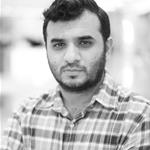
![Why some African Americans are moving to Africa Muhammida el-Muhajir says as an African American in the US, she felt she could 'never win' [Courtesy of Muhammida el-Muhajir]](http://www.aljazeera.com/mritems/imagecache/mbdxxlarge/mritems/Images/2018/1/18/7d37f4a722a44f9e897231f3383efec3_18.jpg)
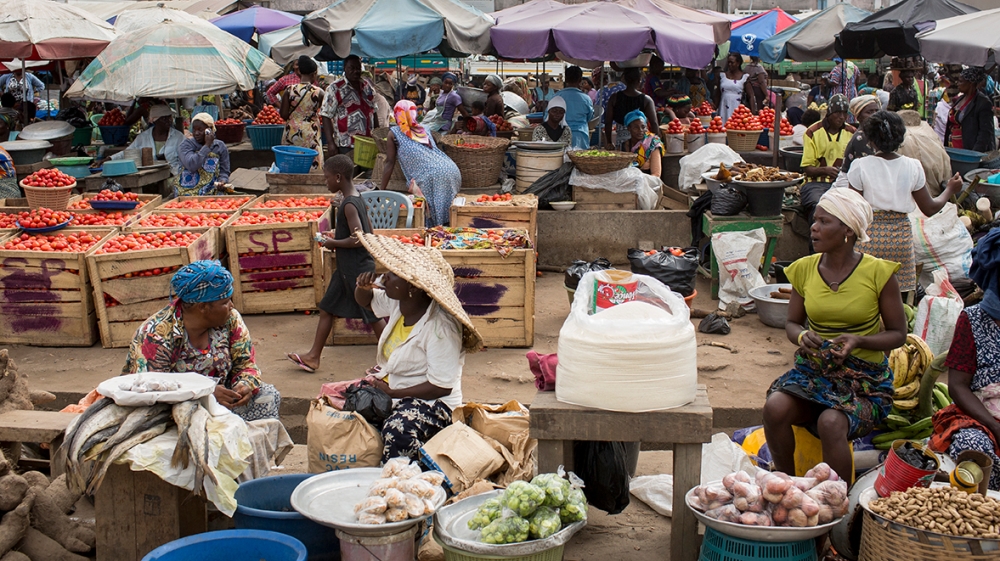








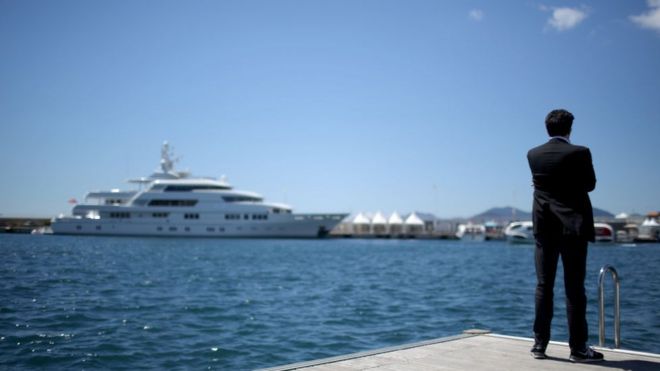
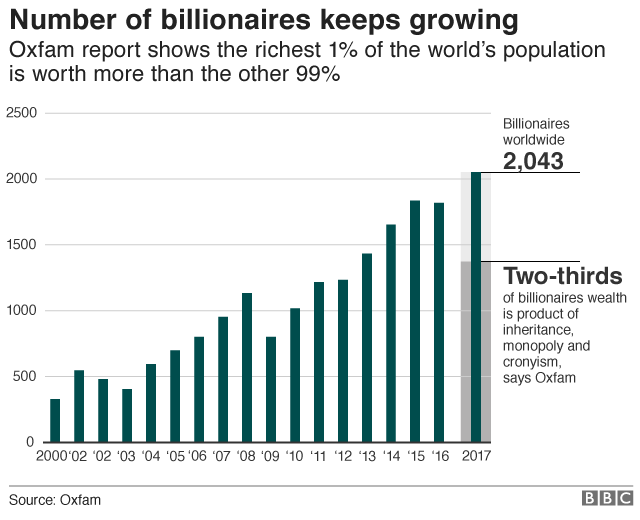




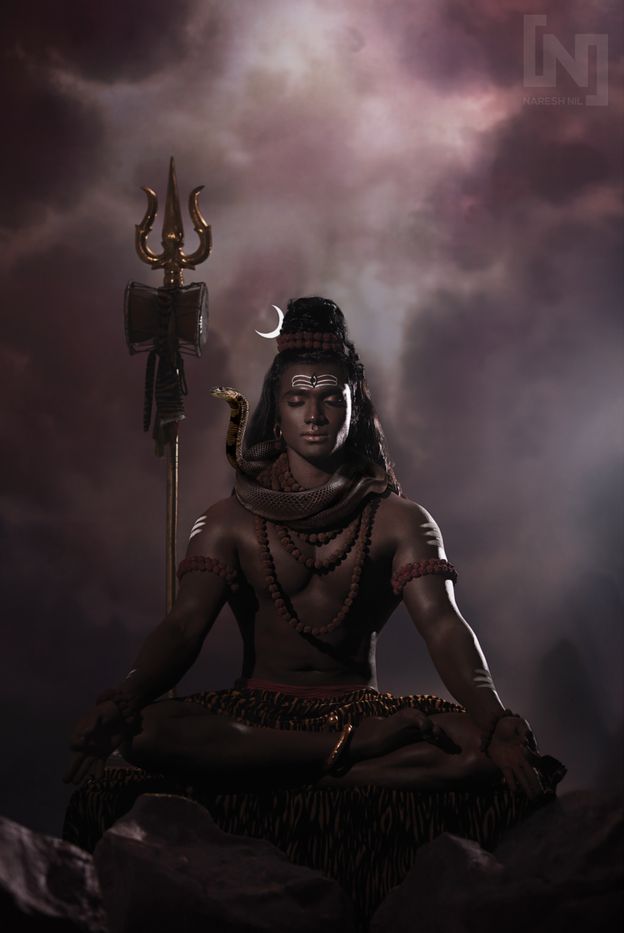
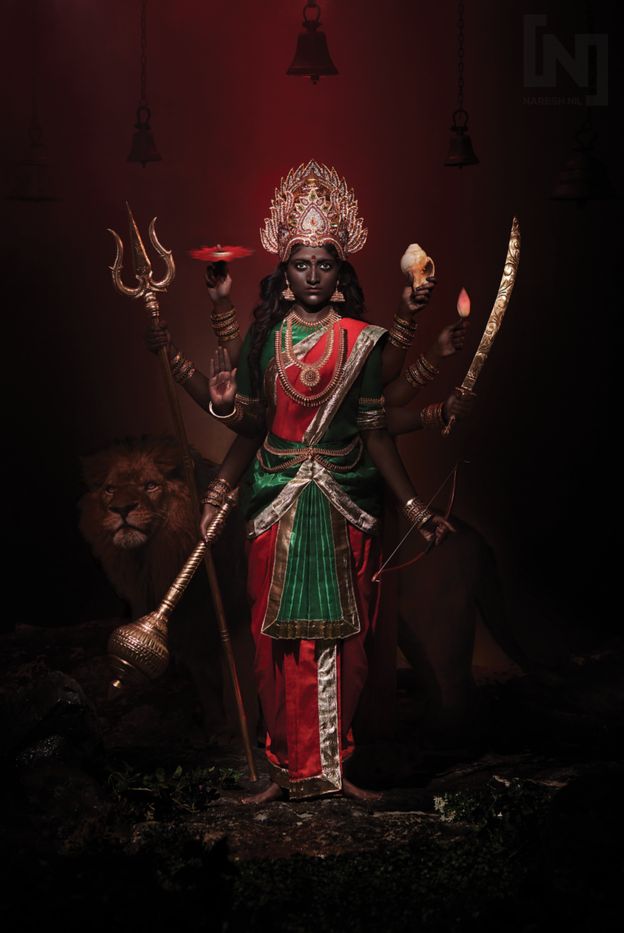





























 DAVID SWANSON / Staff Photographer Darryl Goodman with his father, Bruce Goodman, outside the city’s youth detention center, where they have volunteered as mentors to guide troubled kids.When Goodman left prison, he began working with some troubled kids — on West Philadelphia corners, and at the city’s juvenile detention center — as a mentor, trying to guide them off the streets.
DAVID SWANSON / Staff Photographer Darryl Goodman with his father, Bruce Goodman, outside the city’s youth detention center, where they have volunteered as mentors to guide troubled kids.When Goodman left prison, he began working with some troubled kids — on West Philadelphia corners, and at the city’s juvenile detention center — as a mentor, trying to guide them off the streets.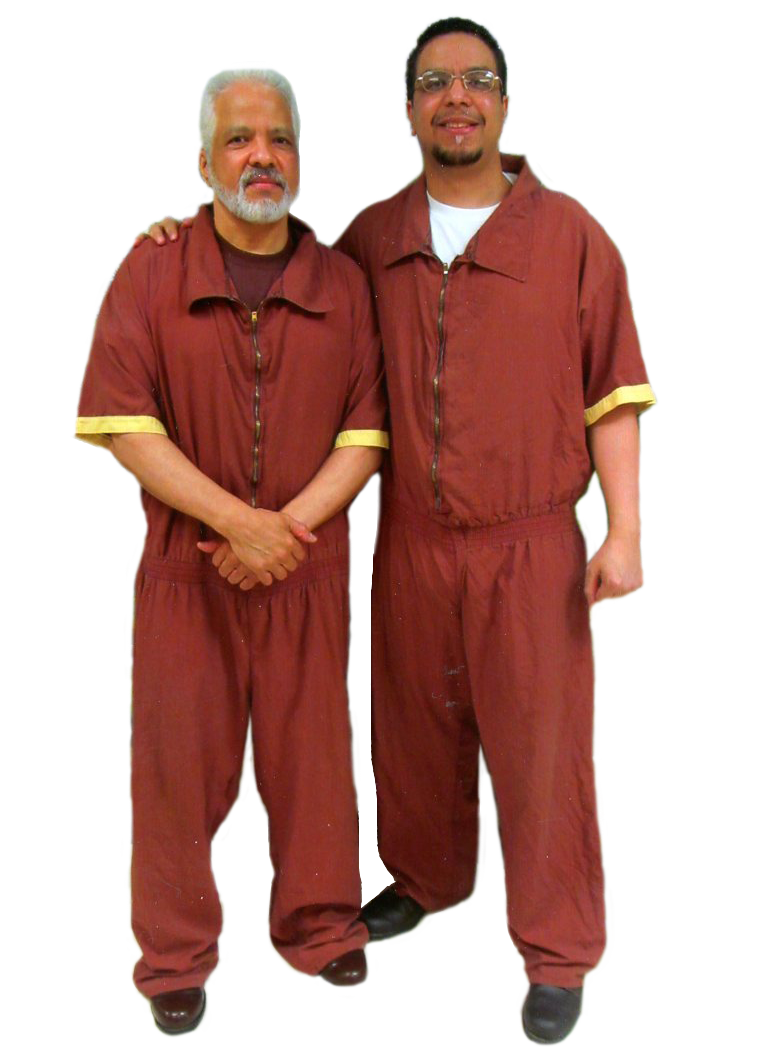 Jorge “Lolo” Cintron, 58 Cintron was working as a truck driver when his sister married into a drug organization. He’s serving a life sentence for the assassination of a rival dealer, and is now a deacon in the prison church. Although his son is in prison alongside him, he said, “I’m proud of my son.” Jorge Cintron Jr., 38 Cintron’s been in prison since age 17 on a life sentence. In 1999, he said, “I gave my life over to Jesus.” A friend of his father’s at Huntingdon state prison guided him into the church. He’s close with a Mennonite family, and calls in to listen to their church service each Sunday.Cintron Sr.’s own father wasn’t around when he was a kid in Puerto Rico. He came to Philadelphia at 15 in search of opportunities, and found gang life.
Jorge “Lolo” Cintron, 58 Cintron was working as a truck driver when his sister married into a drug organization. He’s serving a life sentence for the assassination of a rival dealer, and is now a deacon in the prison church. Although his son is in prison alongside him, he said, “I’m proud of my son.” Jorge Cintron Jr., 38 Cintron’s been in prison since age 17 on a life sentence. In 1999, he said, “I gave my life over to Jesus.” A friend of his father’s at Huntingdon state prison guided him into the church. He’s close with a Mennonite family, and calls in to listen to their church service each Sunday.Cintron Sr.’s own father wasn’t around when he was a kid in Puerto Rico. He came to Philadelphia at 15 in search of opportunities, and found gang life.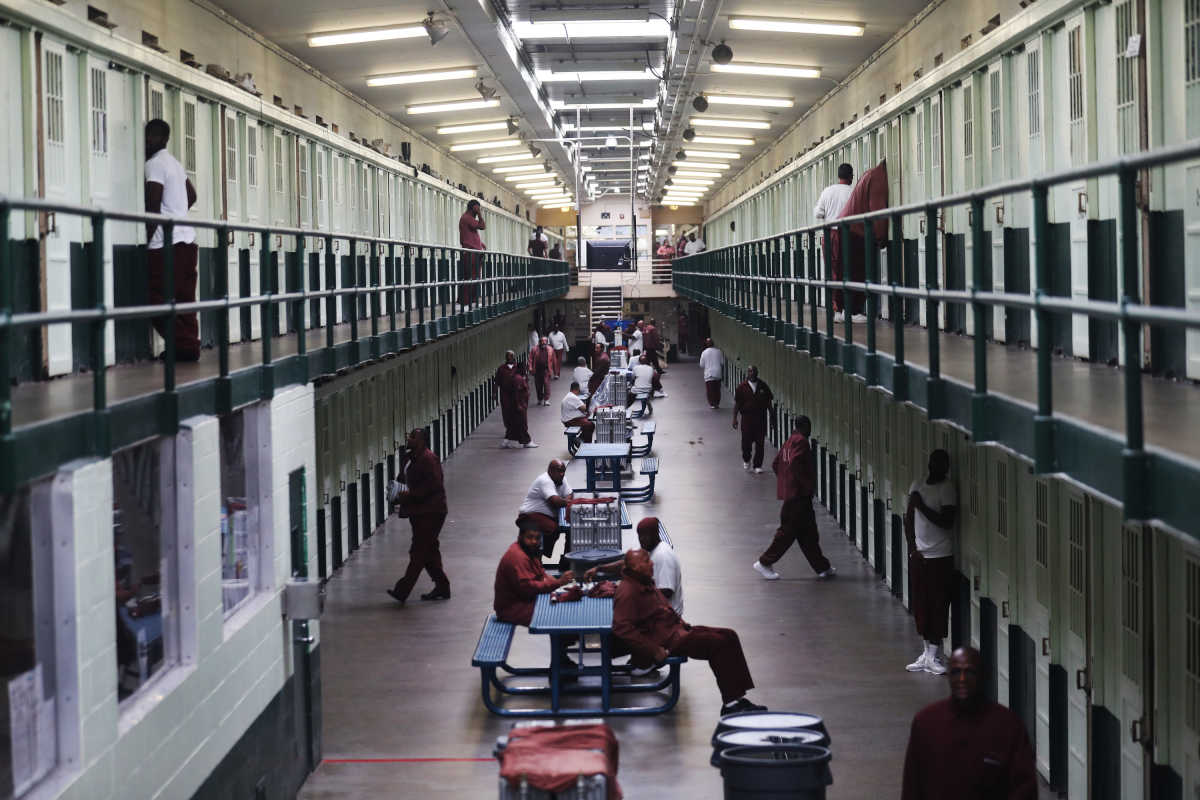 DAVID SWANSON / Staff Photographer Inmates in a block at Graterford Prison, where as many as 41 father-son pairs are incarcerated, in September.Consider Makkah Dillard, who was incarcerated there with his father, Robert Moore, until Moore came home last year. Moore, 57, describes his son’s childhood as “very horrific.”
DAVID SWANSON / Staff Photographer Inmates in a block at Graterford Prison, where as many as 41 father-son pairs are incarcerated, in September.Consider Makkah Dillard, who was incarcerated there with his father, Robert Moore, until Moore came home last year. Moore, 57, describes his son’s childhood as “very horrific.”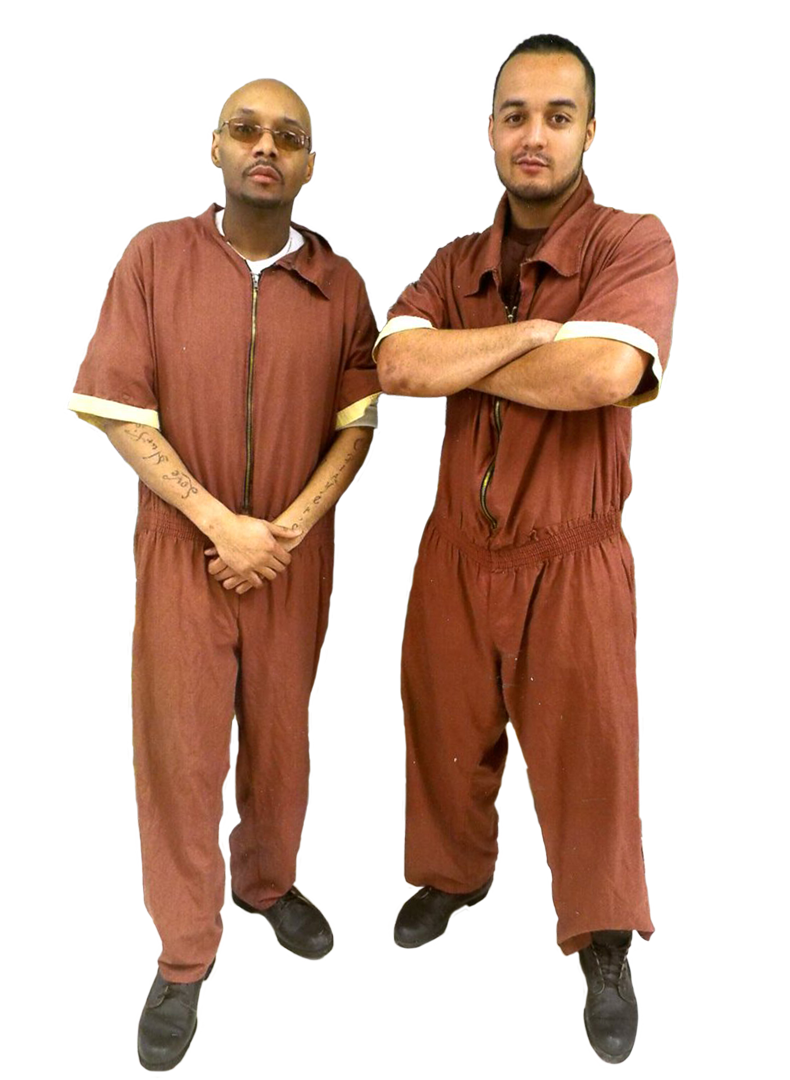 Preston Grimes, 43 He wanted to be there for his kids, but couldn’t maintain the effort. Once or twice, he sent his twin sons birthday cards from prison. “There’s been times when I was 9 or 10,” his son Tyler said, “and a card would come in the mail: ‘Happy birthday, Dad.’ And I’d ask mom, ‘Who’s this?’ She’d say it must be the wrong address.” Today, Grimes’ other kids don’t speak to him. Tyler Grimes, 22 An avid reader and a poet, Grimes said he’s tried to help his father with reading and writing. His father will be paroled before he is. Grimes isn’t sure his father will make it. “I see him in jail. But when you get home, it’s different. You get bills, responsibilities,” he said. He asks his father: “What are you going to do when things get hard? Are you going to just rob someone?”To Tyler’s mind, “it’s a little coincidence, a little bit of following in his footsteps.” He said he grew up fascinated by gangster life, but did not want to be like his father. He was about to enroll in a military academy when his friends convinced him to join in a robbery. After they got caught, his mindset was “like, I’m already a felon, may as well.”
Preston Grimes, 43 He wanted to be there for his kids, but couldn’t maintain the effort. Once or twice, he sent his twin sons birthday cards from prison. “There’s been times when I was 9 or 10,” his son Tyler said, “and a card would come in the mail: ‘Happy birthday, Dad.’ And I’d ask mom, ‘Who’s this?’ She’d say it must be the wrong address.” Today, Grimes’ other kids don’t speak to him. Tyler Grimes, 22 An avid reader and a poet, Grimes said he’s tried to help his father with reading and writing. His father will be paroled before he is. Grimes isn’t sure his father will make it. “I see him in jail. But when you get home, it’s different. You get bills, responsibilities,” he said. He asks his father: “What are you going to do when things get hard? Are you going to just rob someone?”To Tyler’s mind, “it’s a little coincidence, a little bit of following in his footsteps.” He said he grew up fascinated by gangster life, but did not want to be like his father. He was about to enroll in a military academy when his friends convinced him to join in a robbery. After they got caught, his mindset was “like, I’m already a felon, may as well.”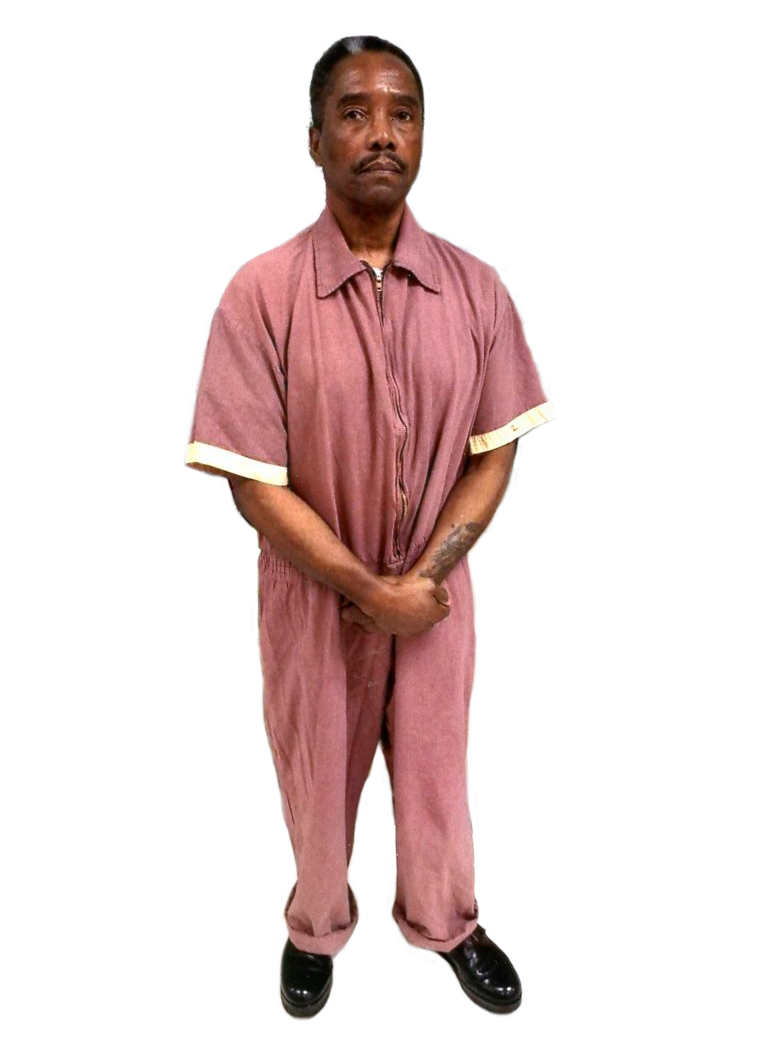 Calvin Floyd, 69 Floyd and his son, Shontee Latham, are both serving long sentences for violent crimes they say they did not commit. “This is not just happenstance,” Floyd said. “Providence brought us together, but there are also some minds behind the social experiment that guides young men to prison. Every generation, they got the whole of Philadelphia locked up.”He was in an institution in western Pennsylvania when a young man approached, inquiring about his clothing. (Though Floyd has the standard-issue brown uniform, his is fastidiously maintained, his shoes polished twice a week to a high shine.) “I looked at him and said, ‘What’s your mother’s name? Do you know who I am? I’m your father.’ ”
Calvin Floyd, 69 Floyd and his son, Shontee Latham, are both serving long sentences for violent crimes they say they did not commit. “This is not just happenstance,” Floyd said. “Providence brought us together, but there are also some minds behind the social experiment that guides young men to prison. Every generation, they got the whole of Philadelphia locked up.”He was in an institution in western Pennsylvania when a young man approached, inquiring about his clothing. (Though Floyd has the standard-issue brown uniform, his is fastidiously maintained, his shoes polished twice a week to a high shine.) “I looked at him and said, ‘What’s your mother’s name? Do you know who I am? I’m your father.’ ”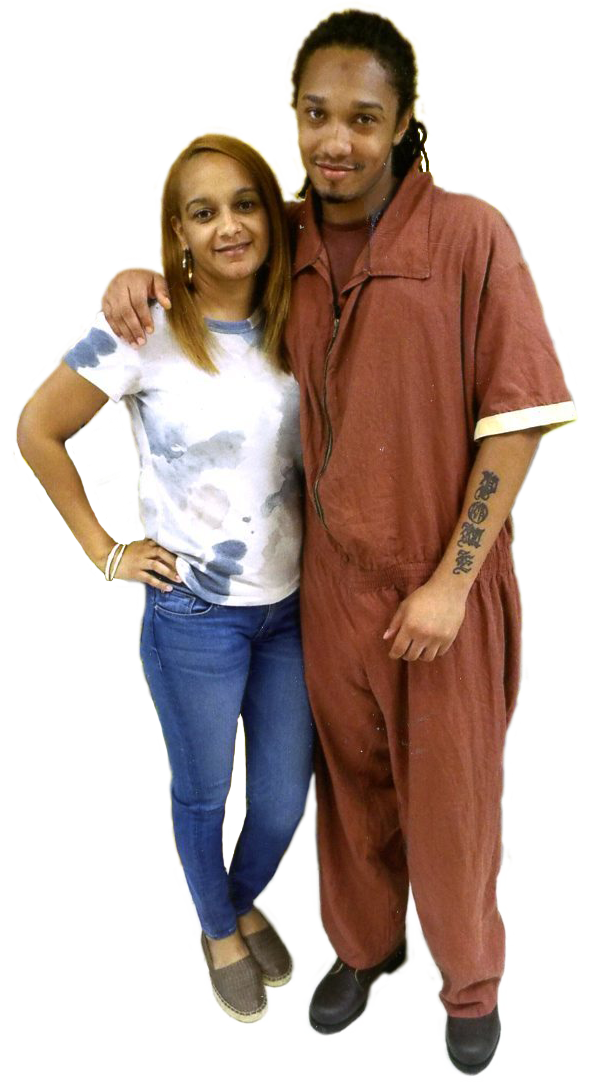 Julian Dan with his aunt, Alisha Cartair, at SCI Graterford. Amir Cartair, 48 In prison for life, Cartair nonetheless tried to be a father to his kids. “They listen to me — while they’re here. But once they leave and get back to the neighborhood, the lure of their friends, that’s it. I think a lot of times they are trying to get out of the shadow of their fathers and make a name for themselves. That tends to get them in the same situation.” Julian Dan, 27 Dan has been in and out of trouble for much of his life. Not long ago, he was shot on the street in West Oak Lane — five bullet holes in his back, chest, and legs. “I was so close to dying. I got scared.” He bought a gun illegally, and went to prison for it. Dan wants to move out of state with his girlfriend and daughter. He thinks leaving Philadelphia is his best shot at breaking the cycle.
Julian Dan with his aunt, Alisha Cartair, at SCI Graterford. Amir Cartair, 48 In prison for life, Cartair nonetheless tried to be a father to his kids. “They listen to me — while they’re here. But once they leave and get back to the neighborhood, the lure of their friends, that’s it. I think a lot of times they are trying to get out of the shadow of their fathers and make a name for themselves. That tends to get them in the same situation.” Julian Dan, 27 Dan has been in and out of trouble for much of his life. Not long ago, he was shot on the street in West Oak Lane — five bullet holes in his back, chest, and legs. “I was so close to dying. I got scared.” He bought a gun illegally, and went to prison for it. Dan wants to move out of state with his girlfriend and daughter. He thinks leaving Philadelphia is his best shot at breaking the cycle.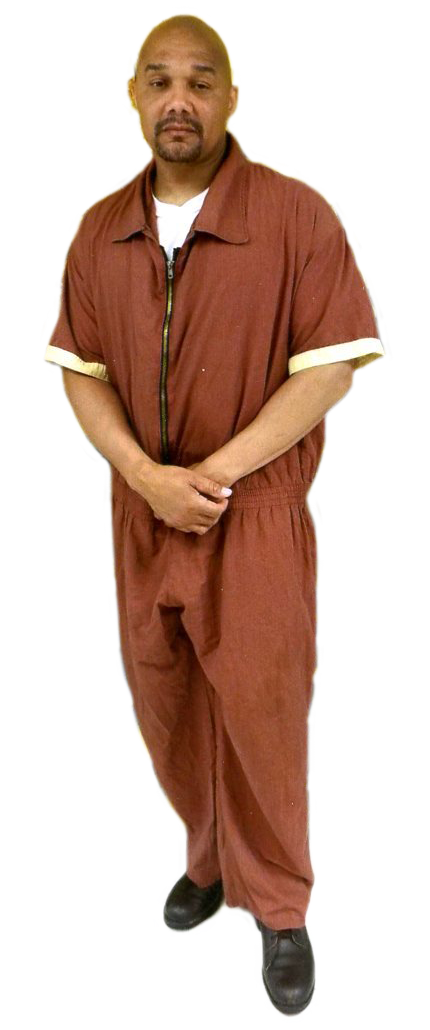 “I didn’t know he was in jail. I thought he was at work,” Dan said. “When I was 10 or 11, I found out what it was. It was one of the worst experiences I can remember. I always looked up to my dad, and when they told me what he was in for I looked at him differently.”
“I didn’t know he was in jail. I thought he was at work,” Dan said. “When I was 10 or 11, I found out what it was. It was one of the worst experiences I can remember. I always looked up to my dad, and when they told me what he was in for I looked at him differently.”



























